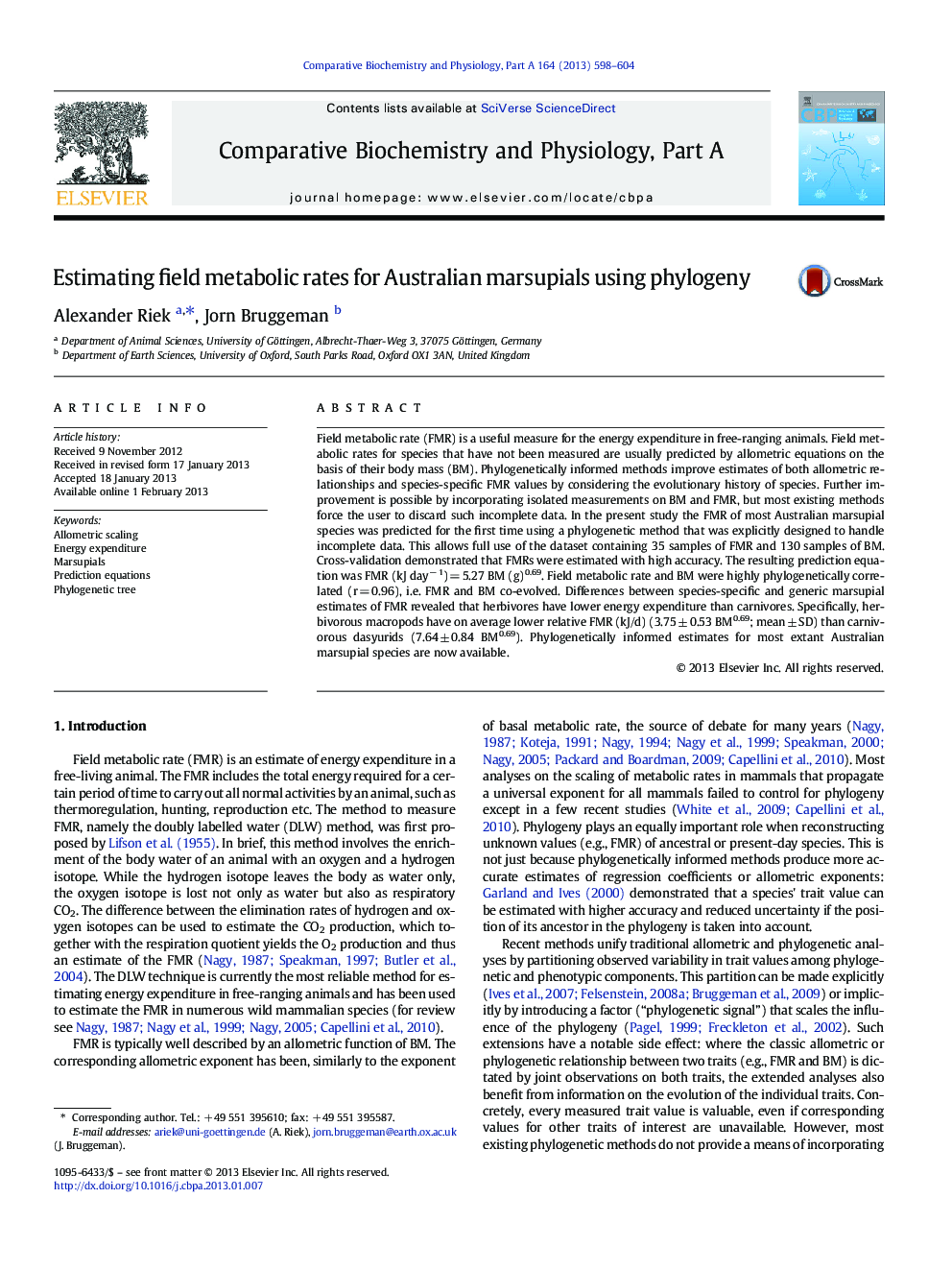| کد مقاله | کد نشریه | سال انتشار | مقاله انگلیسی | نسخه تمام متن |
|---|---|---|---|---|
| 1972596 | 1060278 | 2013 | 7 صفحه PDF | دانلود رایگان |

Field metabolic rate (FMR) is a useful measure for the energy expenditure in free-ranging animals. Field metabolic rates for species that have not been measured are usually predicted by allometric equations on the basis of their body mass (BM). Phylogenetically informed methods improve estimates of both allometric relationships and species-specific FMR values by considering the evolutionary history of species. Further improvement is possible by incorporating isolated measurements on BM and FMR, but most existing methods force the user to discard such incomplete data. In the present study the FMR of most Australian marsupial species was predicted for the first time using a phylogenetic method that was explicitly designed to handle incomplete data. This allows full use of the dataset containing 35 samples of FMR and 130 samples of BM. Cross-validation demonstrated that FMRs were estimated with high accuracy. The resulting prediction equation was FMR (kJ day− 1) = 5.27 BM (g)0.69. Field metabolic rate and BM were highly phylogenetically correlated (r = 0.96), i.e. FMR and BM co-evolved. Differences between species-specific and generic marsupial estimates of FMR revealed that herbivores have lower energy expenditure than carnivores. Specifically, herbivorous macropods have on average lower relative FMR (kJ/d) (3.75 ± 0.53 BM0.69; mean ± SD) than carnivorous dasyurids (7.64 ± 0.84 BM0.69). Phylogenetically informed estimates for most extant Australian marsupial species are now available.
Journal: Comparative Biochemistry and Physiology Part A: Molecular & Integrative Physiology - Volume 164, Issue 4, April 2013, Pages 598–604